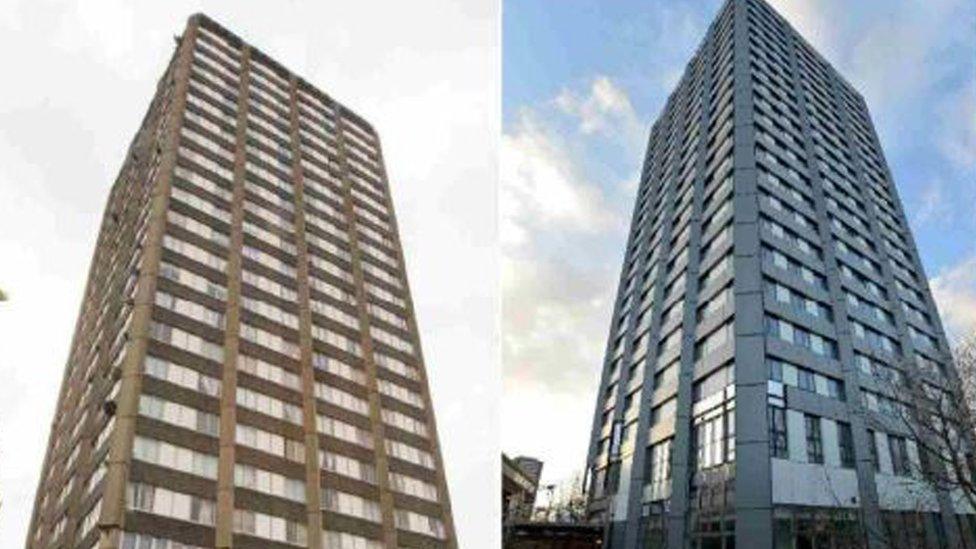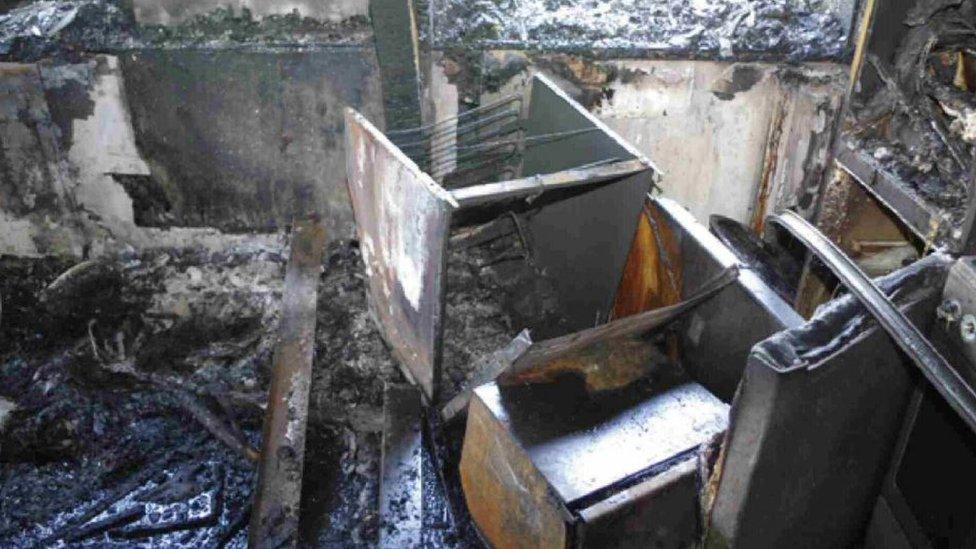Grenfell Tower: Why was 'stay put' advice so disastrous?
- Published

Grenfell Tower before and after the refurbishment
Grenfell Tower tenants should have been evacuated in the event of a fire, rather than told to stay put, a report for the public inquiry has found.
But why was that safety advice, fairly standard for people living in purpose-built blocks of flats, so futile in this case?
Grenfell Tower was built in 1974 of reinforced concrete with a clear fire safety feature in mind.
In the event of a fire in a flat, the design of the building should have prevented it spreading. Concrete, after all, does not burn.
This is called "passive fire protection" and experts say there is absolutely nothing wrong with it. Very few people (before Grenfell) died in a tower block fire which spread from one flat to another.
But today's detailed expert reports suggest that since 1974, the major changes to the building entirely destroyed that protection.
Though these are early findings, which the inquiry will test, the key theory is that the design of the new windows, surrounded not by concrete, but stuff which burns, offered a way for the fire to break out from the flat to the rest of the building.
Once outside, the flames found a source of fuel. The plastic in the newly applied Reynobond 55PE cladding.
It then spread fast around the outside of the building, working around the protection provided by the concrete forming the walls of each flat.
For these reasons, the "stay put" policy was disastrous. Stay put is a perfect strategy when there is a fire in one flat. It prevents hundreds of people descending down stairs while firefighters are coming up.
It might have been possible for firefighters to have reacted to the new scenario more quickly.
But the reports suggest the risk was not properly considered when the building was refurbished, and so they were not warned that things at Grenfell Tower had changed.
"Stay put" was eventually removed as the official advice to residents one hour and 20 minutes after the inquiry's experts say it should have been abandoned. Only 36 people managed to escape after that point.
Disasters like this are never the result of one failure. With Grenfell Tower the list is long, and deadly.
- Published4 June 2018
